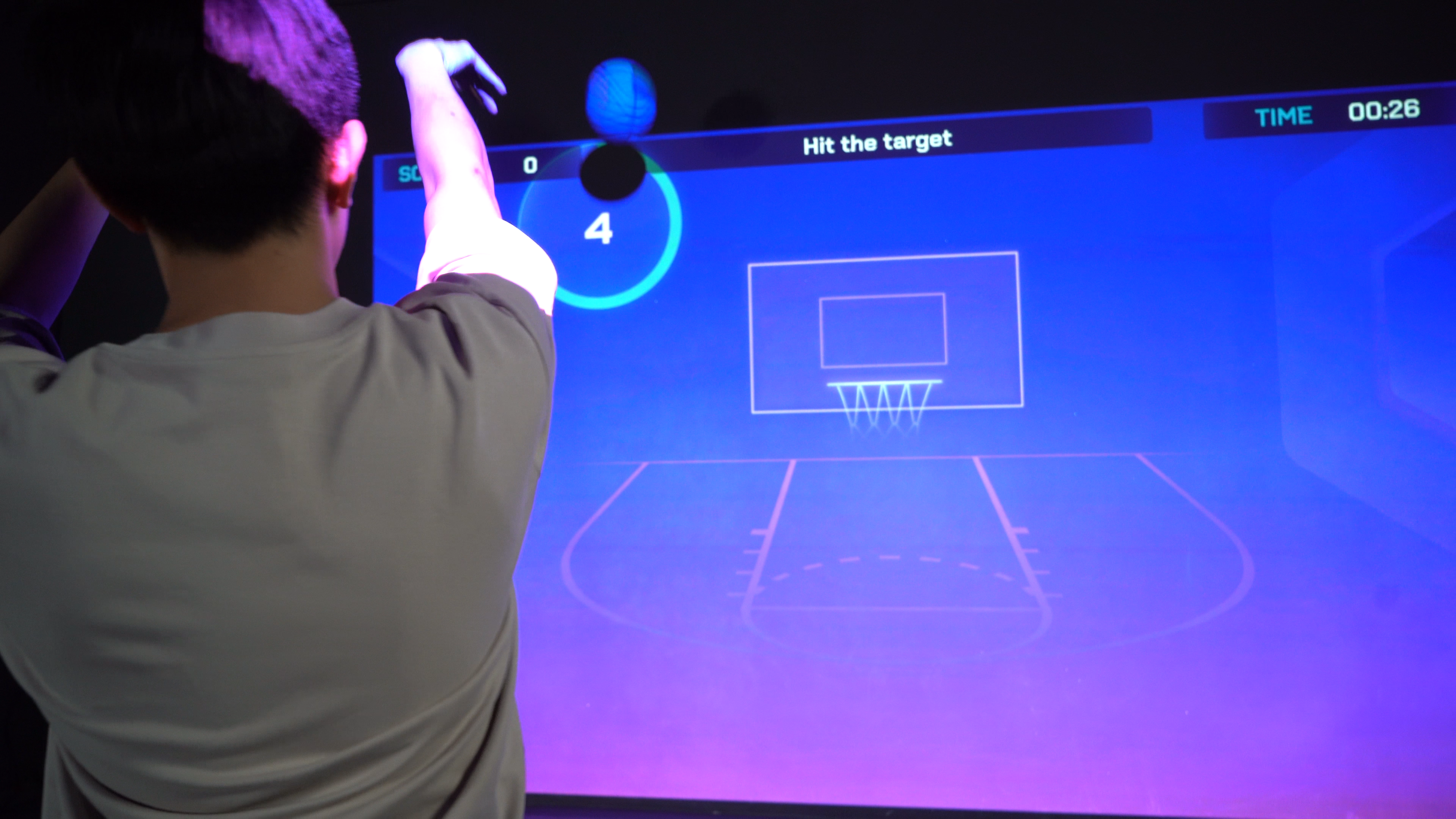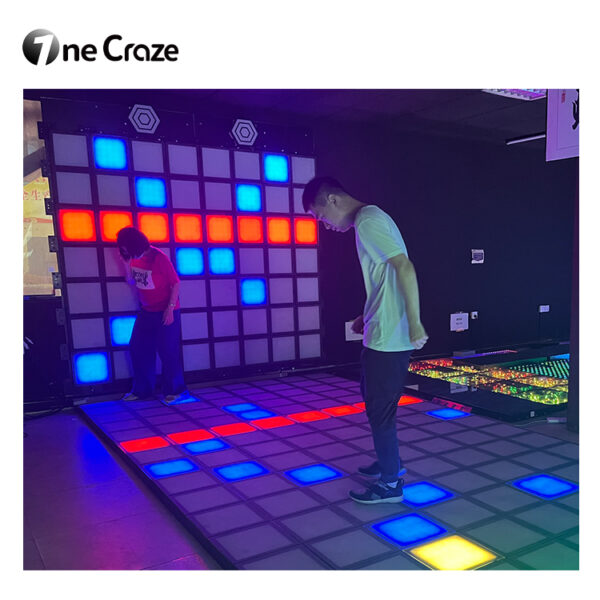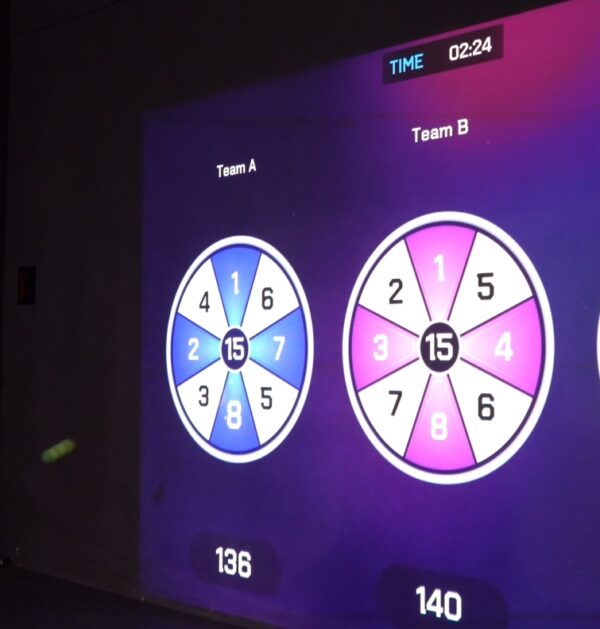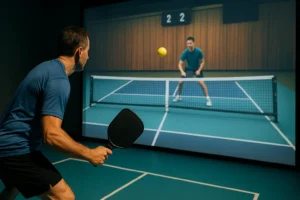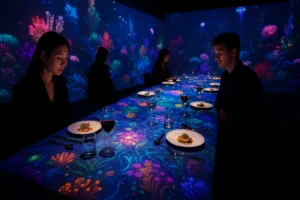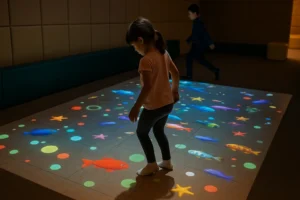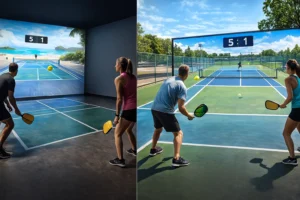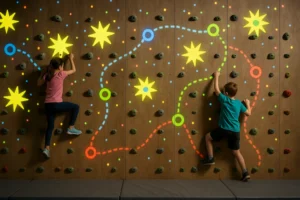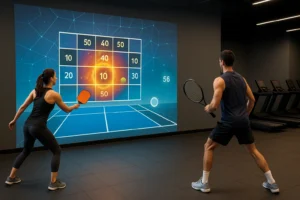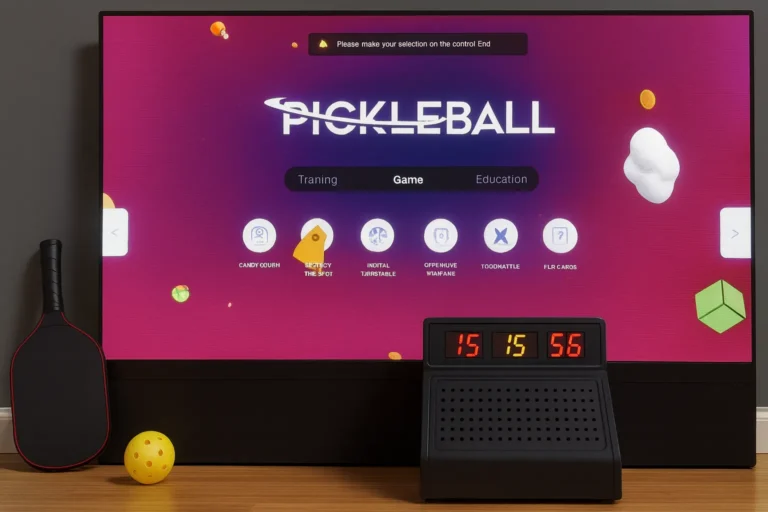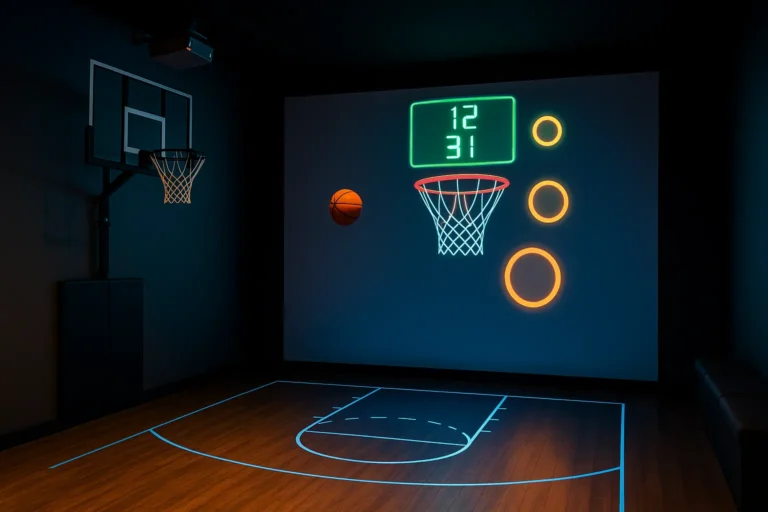🎮 The Rise of Activate Game Halls in 2025
Why is Interactive Hall game space design more critical than ever?
Consumer demand for high-tech, immersive gameplay environments continues to explode in 2025. Locations like malls, arcades, museums, and entertainment parks are investing heavily in Interactive Hall game systems that combine fitness, learning, and entertainment.
The popularity of brands like OneCraze Multimedia Technologies, a leading supplier and manufacturer of immersive tech and LED floors, has accelerated innovation in this space. Projects now include:
✅ Multi-sport ball game rooms
✅ Interactive laser challenge zones
✅ Motion-sensitive bracelet control labs
These solutions are not just games—they’re full-body experiences. Therefore, creating a well-planned spatial layout is essential to handle foot traffic, safety, and engagement.
🧩 Core Zones of a Large Interactive Game Experience Hall
How do you divide the space for maximum engagement?
An effective layout system begins by segmenting the venue into several themed and interactive zones:
📌 a) Entry and Onboarding Area
- Interactive displays showcasing game previews
- Digital kiosks for registration and bracelet activation systems
- Brief tutorial zones explaining game rules and controls
📌 b) Multi-Sport Fitness Game Room Design
- Features physical challenges like digital basketball, soccer, and dodgeball
- Utilizes motion tracking and LED floor zones
- Designed for 1v1, team vs team, or solo fitness competitions
📌 c) LED Laser Activate Game Lab
- High-speed reflex challenges using LED targets
- Synchronized with bracelet game control software
- Competitive rankings displayed on wall panels
📌 d) Immersive Photo Rooms Experience
- Augmented-reality photo booths with game-themed backdrops
- Shareable instant prints and social media uploads
- Perfect for brand engagement and viral content
Each zone should be backed by a unified game software control system, allowing seamless switching, player tracking, and score logging.
⚙️ Hardware and Software: The Heart of the System
What equipment powers today’s most advanced game spaces?
Behind the scenes, a successful game hall depends on the best-in-class hardware and software. Whether you’re sourcing from an OEM or wholesale manufacturer, the following systems are critical:
🔧 LED Floor & Wall Display Systems
- Real-time game animations
- Durable for physical impact
- Smart sensor integration
🖥️ Game Management Software
- Controls multiple zones
- Interfaces with wearable devices
- Provides analytics for player behavior
🧠 Activate Game Bracelet Control System
- RFID or Bluetooth enabled
- Syncs player data across zones
- Tracks scores, steps, and movement patterns
📐 Smart Space Planning & Traffic Flow
How can layout design affect the user experience and game efficiency?
Smart layout is not just about squeezing in more attractions. It’s about controlling the player journey.
🌀 Zoning by Activity Level:
- High-energy games (e.g., dodgeball, laser run) should be spaced from chill areas (e.g., photo booths).
🚪 Entrance & Exit Logic:
- Players should easily enter, check-in, and loop back to start after finishing a game zone.
🧭 Clear Navigation Signage:
- LED floor arrows or digital wayfinding screens help users find their way.
📏 Suggested Spacing Metrics:
- 10–15 sqm per player for active zones
- At least 2-meter spacing between game boundaries
- Bench and storage zones near the entrance for wearable storage
Such planning ensures safety while also enabling higher throughput, which translates to more purchases and better ROI.
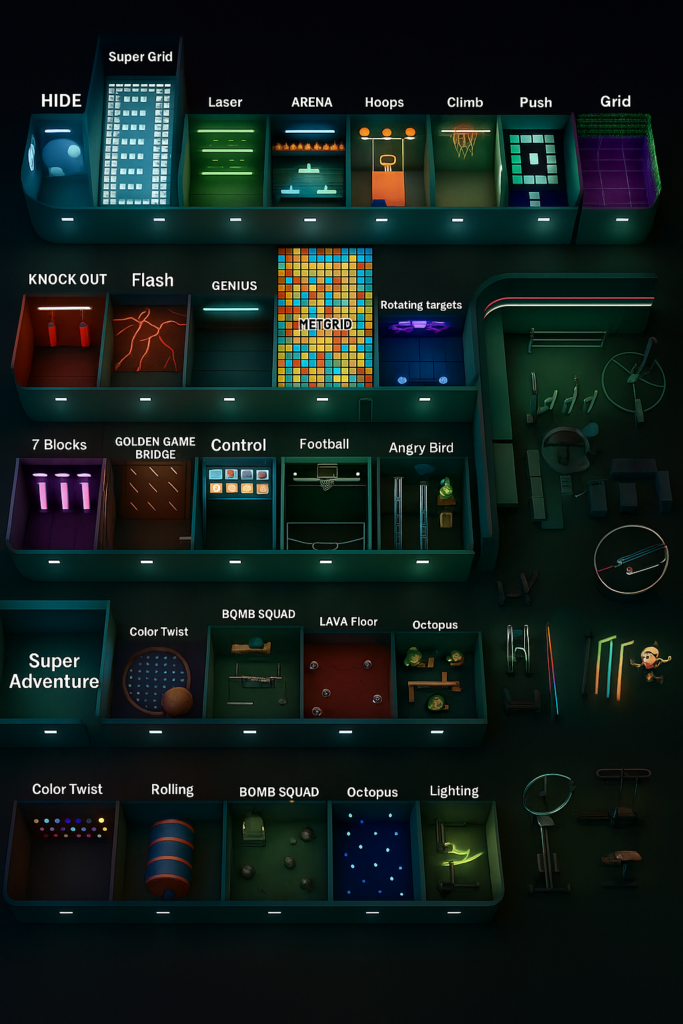
💼 Price, Sourcing & Setup Recommendations
Where to buy? What’s the price range for full system solutions?
As of mid-2025, the average investment for a 500–1000 sqm interactive game hall is between $120,000–$500,000, depending on:
- 🏷️ Game software complexity
- 💡 Number of LED game zones
- 📦 Sourcing from a trusted supplier or OEM
- 🔩 Custom vs ready-made system components
You can buy directly from wholesale manufacturers like OneCraze, who also provide layout consulting, installation, and system integration.
Key Tips Before You Order:
✔️ Check for international certifications (CE, RoHS, etc.)
✔️ Confirm software update policies
✔️ Request demo videos and a game system trial
🧠 Marketing and Monetization: Turning Layout into Revenue
How can a well-designed game layout increase profits?
The layout isn’t just for function—it’s a core marketing tool. Incorporate branded store zones, digital merchandise walls, and game photo souvenir booths to drive more purchases.
💰 Revenue Streams Include:
- 🕹️ Ticketed game entries
- 📸 Paid AR photo sessions
- 🎁 Branded souvenirs and game bracelets
- 🧃 Snack & lounge store zones
- 🧾 Group bookings and events
The price to build a large interactive game experience hall can vary widely, from several hundred thousand dollars to multi-million dollar investments, depending on the size of the space, the complexity and number of interactive games, the level of customization, and the technology incorporated (e.g., advanced projection systems, immersive VR experiences). Factors like land acquisition, construction, specialized equipment, software licenses, and installation all contribute to the overall cost. Engaging with a trusted supplier or maker early in the planning stages can provide a detailed cost breakdown.
Player safety is a paramount concern in interactive game halls. Reputable manufacturers and designers prioritize this through several measures: using durable, non-slip, and shock-absorbing materials for flooring and walls; designing gameplay with clear instructions and safe boundaries; incorporating emergency stop systems; regularly inspecting and maintaining all equipment; and utilizing sophisticated sensor systems to prevent collisions or detect improper play. Furthermore, well-trained staff supervise the attractions and are equipped to handle any situation. Advanced activate game bracelet control systems can also monitor player locations and activity for additional safety oversight.
The Return on Investment (ROI) for a large activate interactive game experience hall can be substantial, often driven by high visitor engagement, repeat business, and diverse revenue streams. Revenue typically comes from ticket sales, membership programs, food and beverage sales, merchandise, and private event bookings. The novelty and immersive nature of these experiences attract a wide demographic, leading to high footfall. Additionally, the shareable nature of the immersive photo rooms experience generates free marketing through social media. By choosing the best supplier and implementing an efficient system, operators can optimize operational costs and accelerate their ROI, making it a highly attractive business venture in the entertainment sector.

